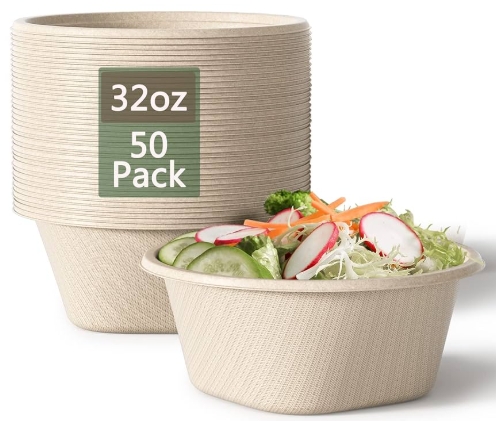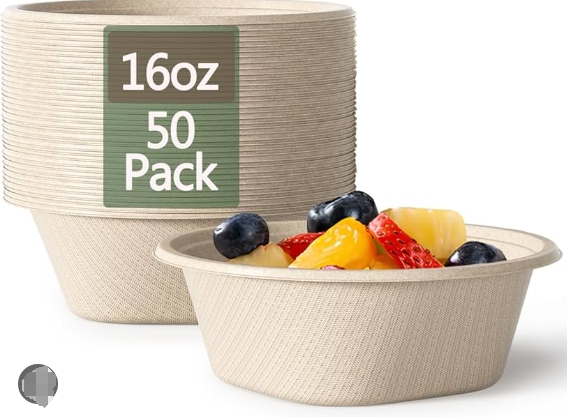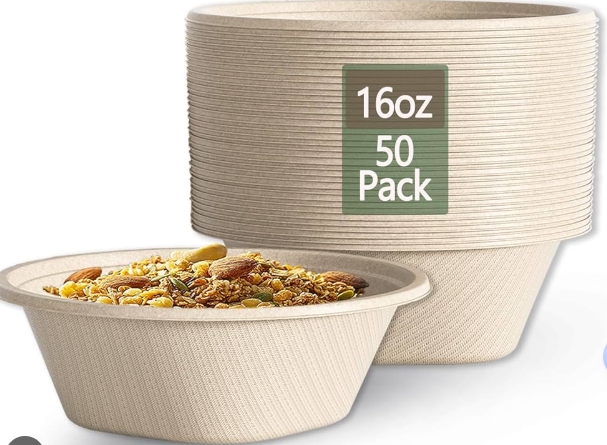
Content Menu
● Understanding Different Customer Needs
>> Customer Segments Benefiting from Customization
>> Motivation for Bowl and Lid Customization
● The Customization Process
>> Phase One – Consultation and Requirement Gathering
>> Phase Two – Concept Design and Visualization
>>> Collaborative Sketching and Digital Mockups
>>> Prototyping and Testing
● Material Selection for Custom Bowls and Lids
>> Choosing the Right Composition
>>> Popular Material Options
>>> Key Considerations During Selection
● How Custom Branding Is Incorporated
>> Brand Integration Through Design
● Packaging and Presentation
>> Final Packaging for Distribution or Sale
● Regulatory and Logistical Considerations
>> Ensuring Safety and Compliance
>> Logistics and Supply Chain Efficiency
● Keeping Up with Modern Trends
>> Innovation in Custom Bowl and Lid Design
● Limited Runs and Special Editions
● Conclusion
● FAQ
>> 1. What materials are best for eco-friendly customized bowl and lid sets?
>> 2. Can I order custom containers in small quantities?
>> 3. How long does it take to customize bowl and lid sets?
>> 4. Will my custom containers be food-safe?
>> 5. How customizable are the lid designs?
Customizing bowl and lid sets to accommodate diverse customer needs involves a delicate balance of creativity, practicality, and strategic branding. In today's market, consumers demand more than mere functionality—they seek personalized, eco-friendly, well-designed products that reflect their values and lifestyle. From fast-food chains and upscale bistros to eco-conscious retailers and health-focused families, every customer segment has unique expectations regarding food packaging solutions.
This article explores in depth the entire customization process, from understanding the target audience to choosing the right materials, incorporating branding, ensuring compliance, and addressing production challenges. Whether the goal is sustainability, brand recognition, or improved usability, businesses can harness the potential of customized bowl and lid sets to meet customer demands and stand out in highly competitive markets.

Understanding Different Customer Needs
Customer Segments Benefiting from Customization
Effective customization begins with identifying who is ordering the product and what they actually need. Typical customer segments include:
- Restaurants and Cafes: They prioritize strong branding, aesthetic appeal, and heat-safe containers for dine-in and takeaway services.
- Food Delivery Services: These customers need durable, leak-proof containers that preserve temperature and prevent spills during transport.
- Retail Packaging Companies: Products must be shelf-ready, easy to display, tamper-evident, and consistent with brand themes.
- Eco-conscious Businesses: These clients focus on non-plastic, biodegradable materials that reflect sustainable brand values.
- Event Organizers and Gift Services: Limited-edition, themed, or decorated containers are often required for marketing campaigns, weddings, or corporate events.
Motivation for Bowl and Lid Customization
Why do brands invest in custom food containers? The answer often includes a mix of the following:
- Brand Differentiation: Unique containers reflect a brand's personality and help it stand out in the marketplace.
- Improved Customer Experience: Custom features add convenience, whether through spill-proof lids, compartmentalization, or attractive design.
- Eco-Friendliness: Replacing traditional plastic containers with compostable or plant-based alternatives can reduce a company's environmental impact.
- Functional Enhancements: Custom designs allow for better stacking, microwave safety, refrigeration compatibility, or dual uses for the lid.
The Customization Process
Phase One – Consultation and Requirement Gathering
In the initial consultation phase, the manufacturer and client meet to define important parameters, such as:
- Intended use (takeout, reusable meal sets, microwaveable designs)
- Container size and capacity
- Aesthetic details (color, shape, decoration)
- Volume and delivery timeline
This phase lays the groundwork for efficient production and aligns expectations early in the project lifecycle.
Phase Two – Concept Design and Visualization
Collaborative Sketching and Digital Mockups
Designers begin building out the container's visual profile, including:
- Ergonomic grip and handling
- Alignment between lid and bowl dimensions
- Brand signature elements like logo placement, color scheme, and surface styling
Visual prototypes and 3D renderings are used to refine ideas before sample production begins.
Prototyping and Testing
After approval of the design, manufacturers produce a physical sample. This prototype undergoes evaluation to test:
- Durability during handling or shipping
- Stackability and storage efficiency
- Airtight sealing and leak resistance
- Overall design appeal and utility
Revisions are then applied to achieve optimal results before mass production begins.
Material Selection for Custom Bowls and Lids
Choosing the Right Composition
The selection of materials is one of the most critical steps in customization. The goal is to balance performance, aesthetic value, safety, and eco-friendliness.
Popular Material Options
- Polypropylene or PET Plastic: Reliable, lightweight, inexpensive, and used in many food-safe packaging designs. Often microwave-friendly.
- Recycled or Biodegradable Plastics: Ideal for green brands aiming to reduce their carbon footprint.
- Plant-based Fibers (Sugarcane, Cornstarch, Bamboo): Compostable, biodegradable, and increasingly popular in eco-conscious markets.
- Glass or Ceramic: For high-end reusable containers with premium aesthetics.
- Paperboard or Molded Pulp: Suitable for one-time-use containers; cost-effective and often compostable.
- Stainless Steel: Designed for reusable container systems, particularly in urban or corporate lunch programs.
Key Considerations During Selection
When choosing materials, businesses must think about:
- Compatibility with food types and temperatures
- Reusability versus disposability
- Shelf life and durability
- Ease of cleaning or recycling
- Cost-effectiveness at scale

How Custom Branding Is Incorporated
Brand Integration Through Design
Customized container designs do more than store food—they act as mobile billboards and brand ambassadors. Brands use a number of techniques to integrate their identity:
- Silkscreen or Offset Printing: Full-color designs, logos, or messaging applied directly to the surface
- Embossing and Debossing: Elevated text or logos for tactile emphasis
- UV Coating or Matte Finishes: Enhance appearance and performance through surface treatments
- Custom Colors or Textures: Matching corporate color schemes to build brand consistency
Every element of the container becomes a part of the user's experience and decision-making process.
Packaging and Presentation
Final Packaging for Distribution or Sale
Great customization often extends to the packaging the bowls and lids are shipped in. Businesses may opt for:
- Branded Outer Boxes or Sleeves
- Eco-friendly Wrapping or Inserts
- Windowed Display Boxes for Retail
- Compact Packaging for Easy Storage and Stacking
Clear and attractive packaging improves shelf appeal and elevates customer satisfaction during unboxing, whether in a store, takeaway delivery, or marketplace showcase.
Regulatory and Logistical Considerations
Ensuring Safety and Compliance
Regulations surrounding food-grade materials differ from region to region. Manufacturers and brands must ensure:
- Materials are free from harmful chemicals and safe for food contact
- Heat- and cold-resistance levels comply with food storage and reheating practices
- All inks and coatings used are non-toxic and adhere to local safety standards
Logistics and Supply Chain Efficiency
Practical considerations are vital to a successful rollout. Manufactures and logistics teams work together to ensure:
- Efficient nesting and stacking in transport cartons
- Proper labeling for fast inventory handling
- Optimized container sizes to reduce empty space in delivery routes
- Scalable production options for fast replenishment
Companies that streamline their logistics reduce spoilage, minimize shipping costs, and lower their environmental impact.
Keeping Up with Modern Trends
Innovation in Custom Bowl and Lid Design
As consumer behavior evolves, so too does customization. New trends include:
- Multi-use Lids: Serving as plates, cutting boards, or microwave splatter guards
- Digital Enhancements: QR codes for product traceability or recipes
- Temperature Sensors: Color-changing lids indicating when contents are safe to eat
- Ergonomic Features: Sliding vents, pop-tab openings, or stackable interlocks for compact storage
Businesses that embrace innovation are more likely to win customer loyalty and earn positive feedback.
Limited Runs and Special Editions
Not all clients need massive bulk orders. Manufacturers increasingly offer:
- Low Minimum Order Quantities: For seasonal promotions or niche campaigns
- Event-Specific Designs: Corporate gifts, weddings, pop-up kitchens, and food festivals
- Quick-Turnaround Prototyping: Using 3D printing or small batch flexi-manufacturing
This flexibility ensures that even small businesses or new startups can access premium custom packaging.
Conclusion
Customizing bowl and lid sets involves much more than mixing shapes, colors, or materials. It's about aligning the product with brand purpose, customer expectations, and practical use cases while navigating manufacturing constraints and safety guidelines. From visual customization and innovative material use to minimal waste packaging and smart logistics, the process is dynamic and ever-evolving.
Whether it's a coffee shop launching eco-lids or a retail chain needing consistent visual identity across global stores, tailored food packaging can effectively enhance customer experience and drive brand value. Embracing customization is not just a marketing decision—it's a business strategy that shapes perceptions and encourages repeat engagement.

FAQ
1. What materials are best for eco-friendly customized bowl and lid sets?
Eco-friendly materials include bamboo fiber, cornstarch-based plastics, compostable paperboard, and bagasse (sugarcane pulp). These options offer the right balance between sustainability, safety, and usability.
2. Can I order custom containers in small quantities?
Yes, many manufacturers offer low minimum order quantities, especially for promotional items, special events, or limited-edition product runs.
3. How long does it take to customize bowl and lid sets?
Typical lead times range from two to six weeks depending on design complexity, order volume, material sourcing, and prototyping needs. Rush production is sometimes available.
4. Will my custom containers be food-safe?
Reputable manufacturers ensure all their products meet industry food safety requirements. You can request compliance documentation and test reports confirming FDA, EU, or regional certifications.
5. How customizable are the lid designs?
Lids can be customized by shape, opening style, sealing mechanism, branding elements, and even interactive features such as QR codes or temperature indicators.

















